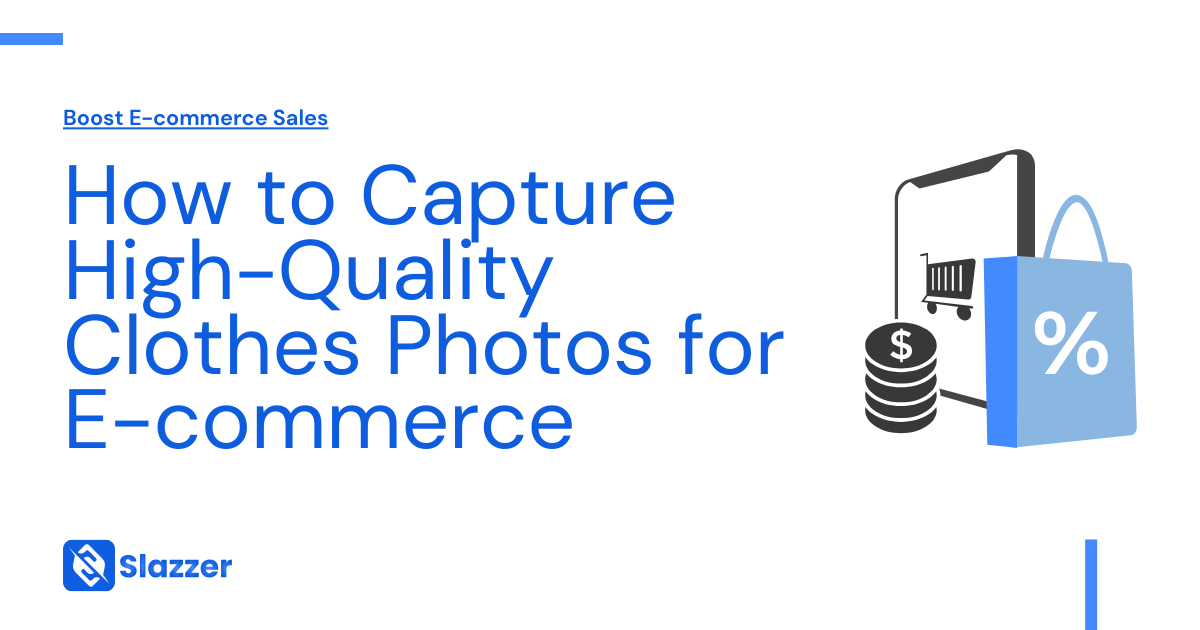- Tips & Tricks
- Dec 21, 2021
Top 6 Powerful eCommerce Trends For 2022: From Live Shopping To Voice Search
The development of eCommerce has been on an exciting journey since its inception. CompuServe was the first eCommerce company founded in the United States in 1969 and while it may seem far-fetched at the moment, computer timeshare services evolved from providing email services to making teleshopping easier in the 1970s.
The 1990s turned out to be very important as businesses started to take advantage of the widespread use of the Internet. From there, online shopping became unstoppable, especially given the tremendous technological advances when broadband first started to replace dial-up in the early 2000s.
eCommerce has been described as “shopping at the speed of thought” but with the advent of AI and machine learning in recent years, it is now evolving even faster.
If you’re wondering what the future holds for the industry, it will certainly be fascinating. So, when thinking about the time ahead, be ready for trends that will amaze you and push the boundaries of what is possible. This blog talks about 6 of the most influential trends that will continue to make waves in eCommerce.
Let’s get started!
Why Are eCommerce Trends So Important?
You may have noticed that the way you shop online today is quite different from how your parents shopped online. This is because eCommerce is progressing quickly and it will continue to do so. In fact, online sales are set to reach $4.2 trillion in 2021, and it’s estimated that the volume of business will reach 5.4 trillion in 2022- that’s just one year later! There’s no doubt it will continue to grow rapidly, and there’s no telling what the future of online shopping will look like in just a few years.
Serving customers online in today’s omnichannel approach is important for businesses; otherwise, the risk of falling behind the competition is pretty high. Here are the top six eCommerce trends to look out for in 2022 to help you succeed online.
1. Augmented Reality To Enhance The Shopping Experience

Augmented Reality (AR) is the technology of merging real-world objects with virtual elements. AR offers an excellent opportunity for eCommerce companies to provide a better customer experience and increase the overall conversion rate.
Augmented Reality can be used in various ways to enhance the online shopping experience to provide product information and tutorials, product presentation, interactive story-telling, or create an opportunity for the customer to get involved with the brand. It can also help customers compare products and share their experiences with other people.
With mobile technologies, Augmented Reality has become an innovative tool that offers brands unlimited possibilities to interact with consumers in 3D on their mobile devices. AR gives customers a brand new digital experience that transforms the customer journey into a rich visual interactive experience.
In 2020, Gartner revealed that 100 million customers used AR to shop online or in store. For example, beauty apps now prevent speculation when choosing a new look. With the LOreals Style My Hair AR app, users can have a virtual 3D make-up experience on their mobile phone and try different hairstyles or hair colors before committing to hairdressing scissors or hair color.
2. Voice Assistants To Improve The eCommerce User Experience

For decades, voice assistants have been a futuristic concept, but they have finally reached mainstream adoption. The technology has progressed to the point that it can be used in everyday life and is projected to become a $19.4 billion market by 2023.
As we have seen with the rise of mobile devices, behavioral patterns change drastically when switching from desktop to mobile. That change was so significant that most businesses had to undergo substantial changes to keep up with it.
According to a study by Adobe, 91% of companies have already invested heavily in voice assistants, and 94% plan to increase their investments in the next year.
Moreover, voice assistants on devices such as cars or televisions make shopping more accessible and convenient and open the door to real-time sales for companies of all sizes. Active or responsive offers to buy, which are a normal part of conversations between users and voice assistants, offer many opportunities to share revenue between the device manufacturer and the service or product that it acquires.
So, with improved artificial intelligence, better natural language processing, and more natural interaction modes, there is no doubt that voice assistants will become a dominant interaction for many eCommerce apps for a better shopping experience.
3. The Rise of Social Commerce

Social commerce is a booming trend that has changed the way people shop online. From Facebook, Pinterest, Twitter to Instagram, e-commerce websites are upping the game in the shopping experience.
According to a recent eMarketers study, 75% of customers use social media to research products to buy. Social commerce uses social media platforms and sites to promote your e-commerce business and improve the online shopping experience. This helps your customers find products, share their shopping experience and shop with their friends.
So, instead of going through a collection of static product pages, social commerce sites allow users to discover and shop for products through their social networks. This gives you an excellent opportunity to interact with existing customers in new believable ways by sharing your brand voice through creative content.
Many social media platforms also have analytics tools that you can use to track users’ social behavior and purchases over time. You can tailor your content and products to your target group with this data.
Burrow is an example of a successful social commerce campaign. Burrow is dedicated to making furniture shopping easy and affordable for everyone. So the company focused its campaign on “leisure,” showing Instagram photos and videos of people crawling on couches and napping in armchairs.
In addition to videos and clips on Instagram Live, Burrows’ Instagram page also has shoppable posts that allow customers to shop directly from the app.
4. eCommerce Business To The Marketplace
The eCommerce industry is one of the highly competitive and ever-changing industries that require quick decisions to stay ahead of the game. While the industry is booming, many eCommerce business owners are converting to marketplace business models.
As consumers continue to look for the most convenient way to shop, we can expect to see a massive shift from independent eCommerce stores to the marketplace. In fact, by 2022, you can expect to see marketplace e-commerce (or m-commerce) continue to grow by leaps and bounds.
Marketplaces benefit everyone in many ways. In this way, product sellers can reduce the cost of acquiring new customers and simplify their operations. Customers see the market as a neutral and trustworthy platform where they can find everything they need, as well as good reviews and offers. Let’s take a closer look at these benefits:
- Advertising transactions are easy to manage
- Sales increased with more loyalty programs
- Reduce the cost of acquiring new customers
- Less marketing costs
- Increased conversion rate
For instance, the marketplace that’s revolutionizing the internet is Amazon, which helps third party sellers reach a global audience and gives millions of consumers a way to find anything they need with one click purchasing and shipping straight to their doorstep in as little as one or two days. This type of marketplace platform that motivates sellers and gives convenience to buyers was highly disruptive a few years ago and is changing shopper’s expectations forever. Amazon was initially a book distributor in 1994 and has since pivoted to become a Trillion-dollar powerhouse that is a staple in almost everyone’s life.
5. Live Shopping To Make Shopping Fun And Interactive
Live shopping is one of the most recent trends that shoppers have come to love. According to McKinsey, by 2026, live commerce will generate revenue that could account for 10 to 20% of all eCommerce.
So, what exactly is live shopping? Live shopping is a trend that allows shoppers to watch videos of products being used in real-time.
This allows shoppers to get a better idea of how the product works and gives them a better understanding of what they’re buying. Live shopping is a great way to grow your eCommerce sales, especially with highly technical products. A live shopping experience is much more exciting and engaging than watching a slideshow of images or a video of someone talking about the product.
Live shopping enables brands to add a human element to their customer experience and allows companies to have higher levels of human interaction in their e-commerce offerings. Since shoppers are more likely to become buyers after interacting with a colleague, it can have a considerable impact.
Live shopping opens up new possibilities for content curation and leading brands can use it to share the expertise of their shopping assistants and effectively turn them into influencers.
Companies like Amazon and eBay have started to offer live shopping for a limited number of products. By the end of 2022, live shopping will be the norm for most eCommerce stores. This is hardly surprising because consumers love it.
6. Automation Tools To Streamline Online Communication
More and more people are implementing automation tools within their eCommerce platform and for good reason. As the industry grows, there will be an increasing need to streamline the shopping experience and make it more efficient for consumers and owners.
One of the biggest mistakes in eCommerce is not planning for scaling operations. Here are some ways that automation can help: From interactive chatbots, automated workflows, email alerts to electronic forms, to photo background remover, and real-time analytics, these automation tools can streamline the online shopping experience to make it much more pleasant for customers.
However, make sure to use these two strategies to leverage automation tools with personalized features to grow your eCommerce sales:
- Segment Leads
Since you are investing in leads, it is better to segment them to create high-quality funnels that increase sales with a personal touch. You can create more engaging content that speaks to your target audience with automation software that sends out custom offers.You can also target specific audiences or keywords using social media or PPC ads. After pulling high-quality traffic to your website, one of the ways to collect email addresses is by providing a lead magnet. You can create multiple landing pages and leads to customize the piece of content in an automated email sequence designed to drive traffic to your eCommerce site so potential customers can make a purchase. - Increase Customer Satisfaction
Automation isn’t just about turning new leads into customers. It can also help you improve customer loyalty, increase your customers’ lifetime value, and even turn existing clients into ambassadors who refer others to your company.Marketing automation software also enables you to offer rewards and incentives that automatically appear in your customer accounts based on their behavior or milestones. Not only does this increase customer satisfaction, but it also encourages customers to continuously buy from your website.
Wrapping Up!
eCommerce will continue to grow and evolve. It’s interesting to see how the industry is changing and how it will change in the future.
But as an online retailer, it is crucial to stay on top of the latest eCommerce trends to provide your customers with the best shopping experience possible.
As we look to the future, we are excited to share these six trends that we think will shape the eCommerce industry in 2022 and beyond. We hope these powerful trends will help you create a future-proof online store.


Comments (0)